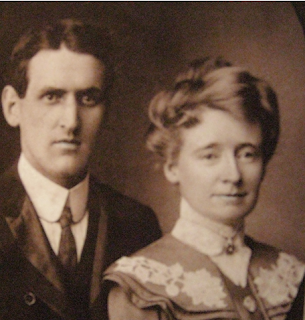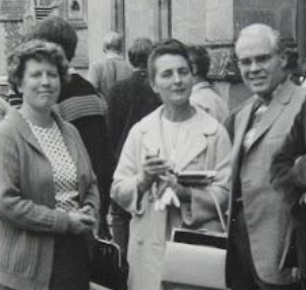The Story of the MacMillan family
An earlier post on this
blog (search for article “The Brooklyn Bethel Family in 1910 and 1913”) showed
how many children at one time lived with their parents at the Society’s
headquarters. This was particularly true after the move to Brooklyn in 1909 and
the establishment of Bethel.
One such family was
that of Alexander Hugh MacMillan (1877-1966). He is known today for his 1957 autobiographical
work Faith on the March. However,
although the book covers his conversion and many key historical facts of Watch
Tower history, much of his personal life is omitted. He does mention in his
book (on page 43) that he was married in 1902. For the record, his wife was
Mary Goodwin (1873-?). The marriage took place on October 6, 1902, when he was
26 and she was 29. She supported him as a Bible Student and full-time worker
for the Watch Tower Society.
Picture of Alexander and Mary taken from Who’s Who in the Bible Student Movement.
Alexander and Mary were to have two children, and in
the census returns for the Brooklyn Bethel taken in April 1910, the whole
family are living there. Alexander is listed as Minister, Bible Society. The
head of the whole household is given as Charles Taze Russell. The MacMillan’s
first son was Albert Edmund Cole MacMillan who was born on December 11, 1907.
In the 1910 census he is 2 years old. Their second son, Charles Goodwin
MacMillan (shortened to just Goodwin in the census return) was one month old.
Charles Goodwin was born on March 28, 1910, but died of tubercular meningitis
on February 3, 1912.
The 1910s was a
tumultuous decade for the MacMillans. It included the death of a child, the
death of Charles Taze Russell, the appointment of a new president, Joseph
Franklyn Rutherford, and then the arrest of key officals on charges of sedition
in 1918. Alexander was one of those convicted and sentenced to twenty years
imprisonment. The men were freed in 1919 and all charges then dropped.
By the 1920 census Alexander,
Mary and Albert Edmund were back in the Brooklyn Bethel with J F Rutherford as
the head of the household. Here is an extract from the census return. Albert
Edmund was now 12. Alexander is listed as Minister, Religious Pub(lishing)
House.
Travelling forward to the 1940 census, Albert Edmund is no longer with them (at some point he married Dorothy, born 1908, died 1969) and Alexander and Mary now live in West Virginia. Alexander’s occupation is now Regional Director for the Watch Tower Society.
According to his life
story in The Watchtower for 1966 Alexander went back to live in Bethel in 1948.
It may be that Mary had died. He was to work extensively at the Society’s radio
station WBBR and then write his famous book.
When he died, the
newspapers gave Albert Edmund as his main surviving relative.
Albert Edmund did not stay with the religion of his parents. He died in 1971 and was buried next to his wife in the Long Island National Cemetery.























